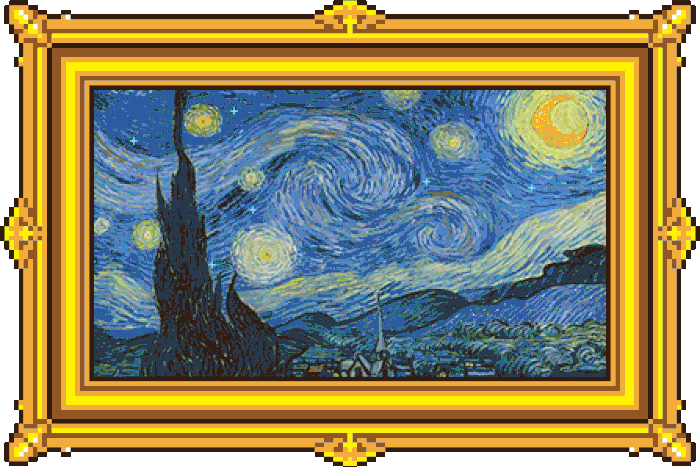
Someday, there may be a Francis Bacon of NFTs. I love the idea of a non-fungible token — the way it lets artists cut out the middleman and bring their own work to a viable market. But so far, the NFTs that have gotten attention for making art history have been singularly unoriginal on any visual level. They are a combination of crapola, kitsch, and dull; the influences are Warhol, Pop, surrealistic illustration, typical white male Abstract Expressionism, calendar art, and psychedelic screen-savers. Many of them are navel-gazing neo-conceptual NFTs about NFTs, all culminating in a kind of living-dead NFT Zombie Formalism.
None of this is inherent to NFTs themselves. An NFT can be a tool, not unlike a camera, a ballpoint pen, etching, or lithography. Over time, artists have figured out how to use these instruments in ways that were never imagined at their invention. Who knew that one-point perspective would produce the sensual receding spaces of Raphael? Or that an artist using raw paint daubed directly on canvas could, as van Gogh did, shatter illusionistic space and make us see the world differently? Once upon a time, pigment and binder were materials that our ancestors mixed in their mouths and spat out in sprays around their hands pressed to the wall. In effect, these were the first photographs — negative impressions. This is the way that art turns tools and media into poetry.
Already, much of the art world has decried NFTs as inherently worthless and inane. They complain that NFTs are immaterial and don’t really exist. An NFT may be entirely immaterial, yet it is no less a “material” than a photograph bought and sold by this publication that exists only as a digital file embedded in a network or device. Anticipating NFTs, third-century BCE Greek philosopher Pyrrho said, “Nothing really exists” and “No single thing is in itself more this than that.” Which means an NFT exists as much as the internet, God, the smell of roses, a black hole, or a toothache. John Cage once composed a piece in which he sits silently at a piano for four minutes and 33 seconds. Robert Rauschenberg erased a de Kooning drawing, called it art, and sold it. French artist Yves Klein sold empty space for gold (half of which he then dropped into the Seine), and artist Tom Friedman once created a pedestal on which he hired a witch to cast a spell. All this art, like an NFT, removes the iconicity of touch, tactility, familiar expressiveness. Yet all these “objects” still have what Kant called “aesthetic feeling.”
We’ll see what aesthetic potential NFTs have. Art is one of the most advanced operating systems ever devised by our species to explore consciousness, our seen and unseen worlds, and NFTs can be just another handle on this endless metaphysical bundle. Perhaps one day an NFT will cast curses, conjure Gods, watch over armies, or give us visions of Elysium. For now, most NFTs seem to have taken less time to make than they do to look at. But artists are like shamans living at the edges of our villages, and sometimes they come up with stuff that can take your breath away. Art finds a way to occupy almost any material and alight in any tool. With NFTs my motto is what it always is: Art first; all else will follow.

